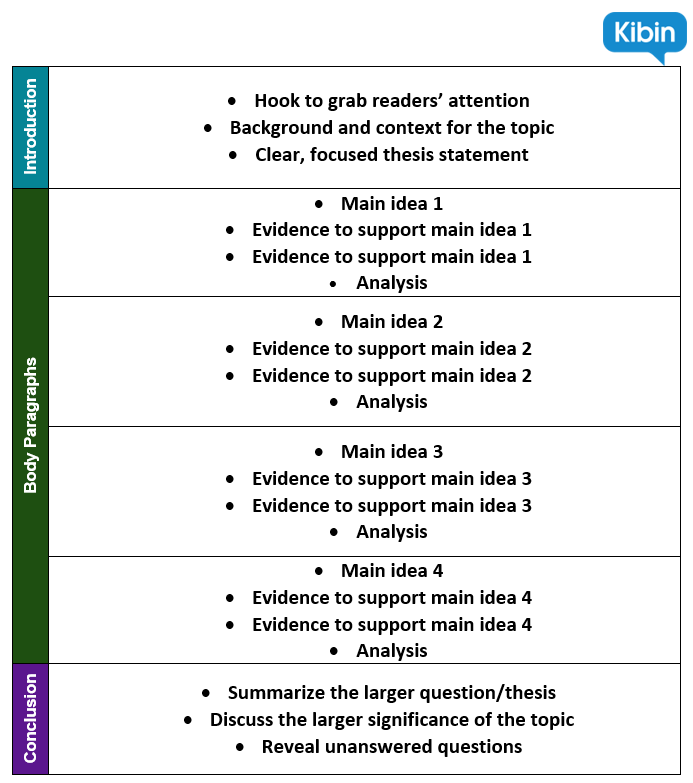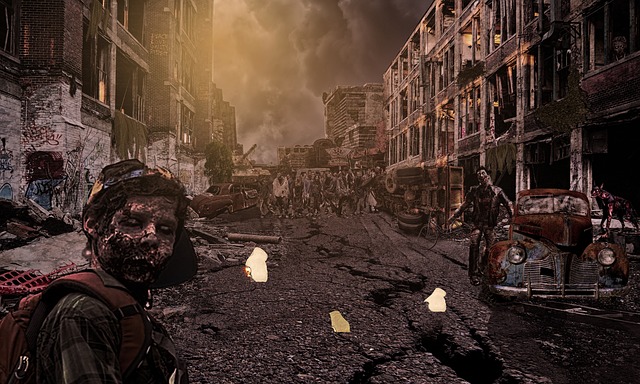Have you spent the afternoon surfing the ‘net and checking every social media app in existence just to avoid working on your expository essay? Are you spending more time procrastinating than you are writing?
That’s okay. I can’t blame you—writing an expository essay can be frustrating. It doesn’t have to be that difficult, though. All you need is a gentle push in the right direction. That’s what I’m here for.
In this post, I’ll show you how to write an expository essay outline. I’ve even included a downloadable outline template you can use to create your own outline.
But Wait … What’s an Expository Essay?
That’s a great question. Sadly, the answer is probably a bit more vague than you want it to be. An expository essay is a catch-all category that describes any essay where you thoroughly expose the inner workings of a topic and teach the reader something new.
In fact, this blog post could be considered an informal expository essay.
Usually, your teacher will ask you to write an expository essay to prove that you have done your research on a subject. Your goal is to effectively explain what a reader needs to know about the topic and answer relevant and interesting questions.
For the purpose of this blog post, let’s say we’re writing an expository essay on the effects of social media on daily life. (I grabbed this idea straight from Crystal’s blog post about expository writing—if you haven’t read it yet, you should hop over there now. I’ll wait).

My goal in this expository essay is to expose interesting information about the topic through the revelation of factual evidence.
To avoid the daunting stare of the blank page and to ensure your information is organized, always start with an outline.
Expository Essay Outline Structure
There is more than one way to pattern an expository essay, including sequential, cause and effect, compare and contrast, spatial, topical, and many other patterns.
Since we’re writing about the effects of social media, we’ll use a cause and effect pattern for this example. (Remember, just because you’re using a cause and effect pattern, it doesn’t necessarily mean that you’ll need to focus on both causes and effects. Check your assignment guidelines to see what your teacher requires.)
Here’s how the general structure will look for this sample outline:
1. INTRODUCTION
A. Hook
B. Background
C. Thesis
2. FIRST BODY PARAGRAPH
A. Main idea 1
B. Evidence to support main idea 1
C. Evidence to support main idea 1
D. Analysis
3. BODY PARAGRAPH 2
A. Main idea 2
B. Evidence to support main idea 2
C. Evidence to support main idea 2
D. Analysis
4. BODY PARAGRAPH 3
A. Main idea 3
B. Evidence to support main idea 3
C. Evidence to support main idea 3
D. Analysis
5. CONCLUSION
A. Restate or summarize your thesis or focus
B. Discuss the larger significance/implications of topic or reveal unanswered questions
Here’s a graphic in case you’d like a visual reminder to follow along with:

Now, keep reading to see what a sample outline might look like with the details filled in.
Expository Essay Outline: Introductory Paragraph
Hook
Start with a hook sentence to get your readers’ attention. Remember, your hook should be both interesting and directly related to your topic.
My hook might look something like this:
Is social media ruining people’s lives?
By posing such a salient question right off the bat, I’m encouraging readers to continue reading.
(What if it is ruining lives?!)
Background
Provide background and context for the topic. Don’t assume your readers know anything about social media or its effects (as one of my English professors once taught me, to assume makes an ass out of u and me).
For example, I might include the following as background:
Social media allows people to connect online, keep in touch with family and friends, market themselves, or connect with customers. With the abundance of social media platforms—such as Twitter, SnapChat, WhatsApp, Instagram, and Facebook (to name a few)—people can spend countless hours in virtual connectivity.
Thesis statement
Write a clear, focused thesis statement. The thesis statement is like a roadmap to your paper. It’s where you get to the point of your essay.
My thesis statement might be something like this:
Even though social media can be a great tool to connect with others, most people don’t realize how much social media interferes with their daily lives.
(If your expository essay takes an argumentative stance, you might want to check out these examples of argumentative thesis statements with a more serious tone.)
What exactly your thesis statement might look like depends a lot on what your prof requires, obviously. But it also depends on the exact type of expository essay you’re writing and the scope of your topic. Make sure you get the structure right by considering any thesis statement myths it might be okay to ignore for your specific essay.
Expository Essay Outline: Body Paragraphs
Now that you’ve caught your readers’ attention, brought them up to speed on the basics, and laid out your thesis statement, your body paragraphs are set up to offer a deeper investigation into the topic of your essay.
The exact number of body paragraphs you incorporate will depend entirely on the parameters of your assignment and/or topic. My example includes three body paragraphs.
Each body paragraph should include the following elements:
- A topic sentence that gives the main idea of your paragraph.
- Factual evidence that answers your question or supports your thesis. In my example, I’ve incorporated two pieces of factual evidence for each topic, but your essay may use more or fewer.
- Your analysis of said evidence. This is where you dig in with your commentary on the importance of the evidence. (Remember to check with your teacher about point of view. Even though this is your analysis, you will likely need to write in third person point of view.)
- A good transition sentence to weave your essay together and seamlessly connect ideas. (Without the use of transitions, your essay can seem choppy and like a random set of vaguely related points.)
Because this example will include the effects of social media on daily life, each paragraph will focus on one key effect. (Remember, separate your main ideas into individual paragraphs. Don’t try to cram everything into one ginormous paragraph.)

Body paragraph 1
Main idea 1: Because it’s so accessible and distracting, social media is an easy way to procrastinate, which causes people to miss deadlines and fail to meet other obligations.
- Evidence: Students who don’t feel like writing an essay can easily spend hours on social media in order to avoid working on their papers. Because students wasted time, they don’t have enough time to work on their papers and end up with a lousy grade (or worse yet, failing the course).
- Evidence: People who aren’t engaged at their jobs could use every free moment to check social media to procrastinate and avoid their real work, such as someone who should be clearing tables. Procrastinating too much means that too many tables in the restaurant are dirty, customers don’t have any place to sit, and the person is soon fired for spending too much time on Twitter—#Unemployed.
Analysis: Some people who use social media as a way to procrastinate (or avoid other tasks completely) may experience minimal consequences, but extreme procrastination due to excessive time on social media can lead to life-changing negative effects.
Body paragraph 2
Main idea 2: Too much time on social media can make someone anti-social.
- Evidence: Before social media, a self-proclaimed cat lady who preferred to spend time with her cats would still need to hang out with people once in awhile to maintain social connections. After spending more and more time on social media, she withdraws from the real world and spends all her time with her cats and online with people who adore their cats as much as she does.
- Evidence: Before social media, college students might go to the movies with friends or to someone’s house to binge-watch their favorite zombie series. With heavy use of social media, those same college students might become more and more like zombies themselves, staring at the TV and chatting only with online friends through seven seasons of Zombie Apocalypse.
Analysis: Moderate use of social media can be an awesome way to connect with friends. Too much time spent on social media, however, makes it easy for people to become isolated, living only in the virtual world.

Body paragraph 3
Main idea 3: Social media can make people feel inadequate or that they’re living a boring life.
- Evidence: After a perfectly normal day of going to the grocery store, doing laundry, and catching up on homework, a woman checks Instagram, and she sees her best friend at the Super Bowl. Doing laundry hardly compares to attending the game, so she feels like her life isn’t as good as her friend’s.
- Evidence: A person scrolls through Pinterest and sees a friend’s version of the newest trending craft: an amazing bottle cap wall art masterpiece worthy of a spot in MoMA. When she compares her own attempt to her friend’s, she feels that her creation is only worthy of the garbage can.
Analysis: Even though people may be talented and lead perfectly normal lives, comparing their lives to their friends’ on social media can lead people to feel that they can’t compete and simply aren’t as good as others.
Expository Essay Outline: Concluding Paragraph
Finally, it’s time to write your concluding paragraph. In this paragraph, you can do any of the following:
Summarize your question or thesis
To focus on something that summarizes my thesis, I might write the following:
Though social media is an excellent tool to connect people, it’s important to use it wisely as it can do more harm than good.
Discuss the larger significance of the topic
A conclusion focused on the larger significance of my topic might include a statement like this:
Social media is a powerful tool that can end up creating an isolated society full of procrastinating, distracted people with feelings of inadequacy.
Reveal unanswered questions
A conclusion focused on unanswered questions about my topic might include this statement:
Even though social media can be used to connect people, wouldn’t it just be better to speak with people in person?

If you find you need more help with outlining and shaping the concluding paragraph, read these posts:
- 20 Essay Conclusion Examples to Help You Finish Strong
- Loose Ends: How to End an Essay With Authority
- Wrap It Up: 15 (Better) Concluding Transitions
Expository Essay Outline Download
If you’re in the position where you need to write an expository essay but aren’t sure where to begin, feel free to get started with this expository essay outline template (Word .doc download).
Check out these example expository essays if you need writing inspiration to get started.
If you have a draft and are looking for even more help with the finishing touches of your paper, you might find these posts helpful:
- How to Title an Essay When You’re Absolutely Stumped
- 33 Commonly Misused Words (and How to Get Them Right)
- 5 Punctuation Rules You Need to Know
- Why Eliminating Wordiness Is So Important for Your Essay
Once you’ve shaped your outline into a completed essay, get a Kibin editor to review your paper before you turn it in. We’ve edited tens of thousands of papers, and we can help you with yours too.
Good luck!
Editor’s note: This post was originally published on August 11, 2014, but has been updated for freshness and relevance.
